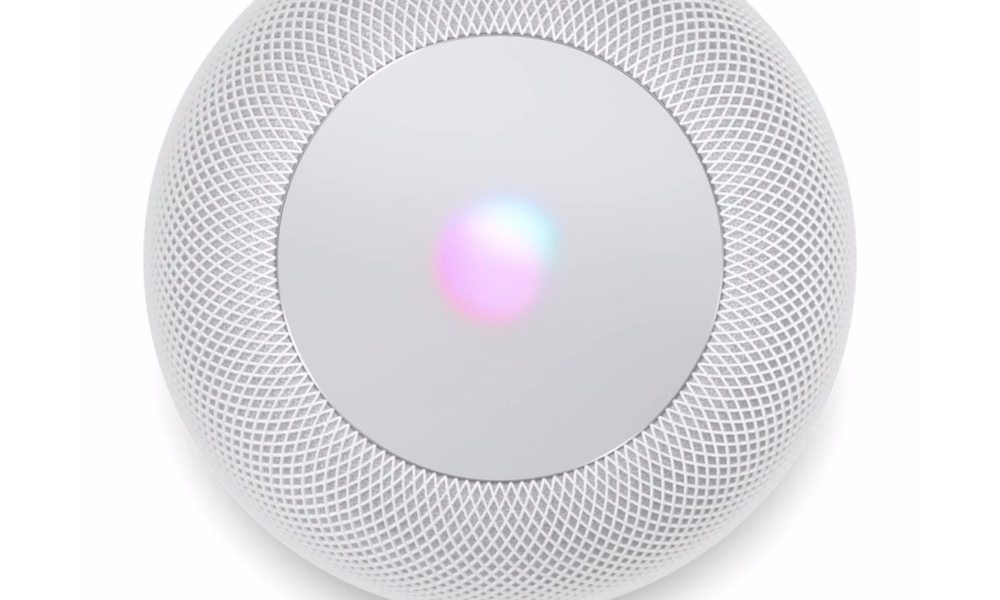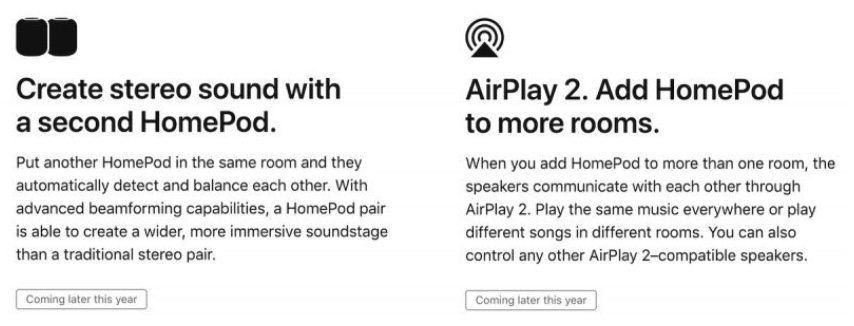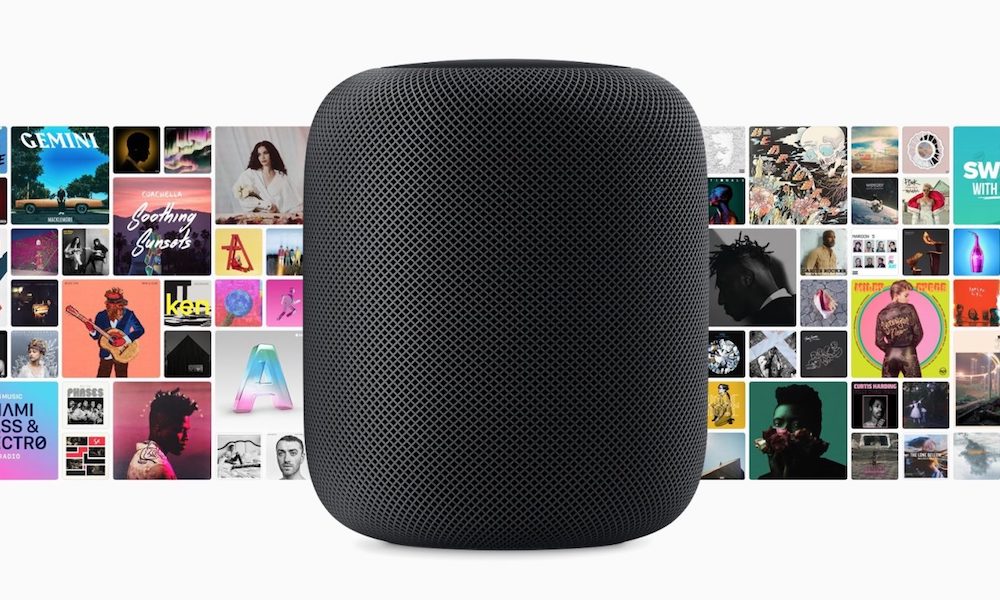In just a few days, users who have pre-ordered HomePod will get their hands on the device for the first time.
HomePod has been available to pre-order since Jan. 26, and it’ll begin shipping to consumers on Feb. 9.
But if you haven’t ordered HomePod yet, should you?
Luckily, there are quite a few early reviews of the device and they paint a clear picture of HomePod’s key advantages and disadvantages.
Here are the takeaways you should know.
√ HomePod Pros
Aesthetic
This probably isn’t going to be a primary selling point for anyone, but it is worth mentioning: HomePod looks really nice.
The build quality and materials used are all excellent, and it sports the company’s typical minimalist design. Apple has also ensured that its looks don’t interfere with its audio quality. (Its springy mesh covering is sound-neutral, for example.)

Of course, aesthetics only take a device so far. But HomePod manages to combine good looks with simplicity and a suite of powerful audio-based technology and speakers.
Ease of Use & Seamless Integration
Apple has an “it just works” philosophy with its products, and HomePod really embodies that design MO. For one, the device takes about 30 seconds to set up.
The device automatically grabs important information like your Apple ID and iCloud data. It also automatically syncs with all of the HomeKit-compatible devices in your home. Once it is, it’s very easy to access and control the various features that it sports. That means, after the 30-second setup, you can ask Siri via HomePod to open your shades.
And on that note, HomePod can pick up “Hey, Siri” voice commands extremely well with its onboard suite of microphones.
Privacy
We’ve previously written that Apple’s best product is its commitment to privacy, and that’s no less true in regards to HomePod. And its approach to voice commands should distinguish it from competitors for the privacy-minded.
While HomePod lacks an analog microphone mute button, any voice information is only transferred to Apple after a user says “Hey, Siri.” That data is then encrypted and labeled as an “anonymous Siri identifier.”
Compare that to Apple’s rivals. Amazon doesn’t anonymize data collected through Alexa voice commands. And Google keeps basically all of your information, from voice commands to search history and your physical location.
Audio Tuning
Rather than being marketed as just another smart home speaker, Apple is specifically touting the HomePod as the next generation of home music playback hardware. It does this with its excellent speakers, but we’ll get to that in a second.
HomePod also sports some advanced audio tech (the combination of about 200 patents, Apple says). When you place HomePod somewhere, it begins detecting and analyzing the space it’s in, and tuning its audio playback settings accordingly with its onboard A8 chip. HomePod knows where it is in a room, and can even detect when you move it so it can start the process over again.

This “beam-forming” technology allows it to intelligently tweak audio playback. It assigns specific elements of a music track to different beams, and even works to ensure that its bass doesn’t overwhelm the rest of the music. Put simply, there’s a lot of technology at work ensuring that you get excellent sound quality — even before you hit play.
Sound Quality
But its smart analysis and audio tuning is just one part of HomePod’s audio. Amazing sound quality is how Apple hopes to set HomePod apart. And from basically every early review that we could find, Apple succeeded in this regard.
HomePod just sounds better than basically any other smart speaker on the market. That’s largely because HomePod isn’t one speaker, it’s eight: a seven tweeter array and a powerful four-inch woofer.
That fact, combined with Apple’s proprietary room-analysis and audio processing technology, gives what is perhaps the cleanest and highest-quality sound on the (smart speaker) market. That includes cheaper speakers and even speakers that are more expensive. But, of course, that superb audio quality comes with a few caveats.
√ HomePod Cons
Price
There’s no getting around the fact that HomePod is fairly expensive for a smart home speaker. It’s $349 in the U.S., whereas the cheapest Echo product retails for about $50.
On the other hand, that cost is offset by HomePod’s feature set and quality of audio playback. That’s especially true since HomePod sounds better than similar yet more expensive speakers.
It all comes down to how much a user is willing to pay for the device, particularly with its other faults. Devoted Apple fans with spare cash will likely find the speaker more appealing than a Spotify user on a budget.
Important Features Aren’t Available (Yet)
This fact will only hamper HomePod’s release temporarily, but it is worth noting for those who have pre-ordered and early adopters.
Initially, HomePod will lack two relatively important features: stereo sound for multiple HomePod playback, and multi-room audio via AirPlay 2. HomePod will also only work in English at launch.

Multi-room audio and stereo playback will arrive in a free software update later this year. Apple will also add additional supported languages in the future — presumably when it’s launched in other countries.
It’s Locked Into the Apple Ecosystem
HomePod is a closed system, and it really only plays nice with Apple’s proprietary services. This, perhaps more so than anything else, will be the dealbreaker for many. To play music on HomePod, users will need to subscribe to Apple Music or iTunes Match. Music played from an iTunes library must also be officially purchased from iTunes.

To HomePod, services like Spotify basically don’t exist. Users can stream Spotify audio via AirPlay, but third-party platforms won’t work with Siri’s voice commands. Similarly, if your primary smartphone is an Android, you’re also out of luck. HomePod will only sync with iOS devices. And it can’t play audio from an Android over Bluetooth, either.
Apple Music may be growing in popularity, but the fact that it’s one of a few streaming options for HomePod is still a limitation.
Siri Is Lacking Polish
First-party limitations of HomePod could be a minor concern for those already locked into the Apple ecosystem. But, sadly, there’s another fault for any HomePod user: Siri on HomePod is just not as polished or feature-rich as competitors like Alexa or Google Assistant currently.
You can’t ask Siri to play something on your Apple TV. And even though HomePod is a speakerphone, you won’t be able to ask Siri to make calls. Siri won’t be able to look up recipes, and it won’t have the vast array of knowledge that Google implemented for its Assistant.
Weirdly enough, Siri on HomePod also can’t be trained to recognize different voices. That might be okay for a household of various users, but it also means that anyone in the household can access a user’s private text messages. And these are just a few examples. In other words, Siri just isn’t as capable as its rivals — at least, not yet.
√ Final Conclusions
If you take all of this information and boil it down, the key takeaway is pretty simple.
- HomePod sounds amazing. It likely sounds better than any other smart speaker on the market.
- It also looks great, is simple to use, and incorporates many of the reasons why users love Apple.
- But it’s also expensive and only plays nice with Apple services. Spotify or Tidal subscribers will be inconvenienced, and Android users need not apply. That might be okay if Siri was a bit more functional (which it still could be in the future).
All in all, HomePod will make sense for some, while others should probably stick to other platforms.
from iDrop News http://ift.tt/2EMCgcT
via IFTTT
No comments:
Post a Comment
Note: Only a member of this blog may post a comment.